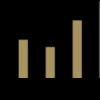
Plato once said the highest form of pure thought is mathematics. While maths is not everyone’s strength, trading the forex markets is largely a game of numbers. The better you are at math, the greater your chances of success become.
Importantly, traders should only focus on the essential statistics and disregard the others, which have little influence on your profitability. Hence, this article will cover the most crucial metrics to grasp and methods of calculating them.
These provide the necessary framework for you to assess your performance in the long term accurately and should help in reflecting your strong and weak points.
Risk-to-reward ratio
The risk-to-reward (RR) is a bread and butter concept to making profits in any market. It describes the relationship between what you risk per position versus what you intend to gain as a ratio. So, a 1:2 ratio means a trader’s reward is twice the size of their risk or stop loss on average.
Of course, anyone desires to increase the number of the right of the scale as great as possible and win more often. Yet, it becomes almost impossible to have both, which is crucial to understand about RR.
The rule of thumb is if you frequently trade (e.g., scalping, day trading), you need a higher win percentage since traders here profit from smaller rewards. Therefore, their RR ratio is lower, sometimes lower than 1:1.
Conversely, the less frequently you trade (e.g., swing trading, position trading), the less high your win rate needs to be due to the bigger rewards. In this regard, traders can aim for RR ratios above 1:3 or higher.
| Risk: reward | Win rate needed |
| 1:10 | 9% |
| 1:5 | 17% |
| 1:4 | 20% |
| 1:3 | 25% |
| 1:2 | 33% |
| 1:1 | 50% |
| 1:0.5 | 67% |
| 1:0.3 | 75% |
To illustrate these two contrasts better, look at the table above, which shows different win percentages and the minimum required RR ratios to show a profit.
Expectancy
As the term suggests, expectancy refers to how much money a trader expects to profit per position. Expectancy deals very much with your risk to reward in forex. Yet, unlike the typical risk-to-reward ratio, expectancy is a more accurate assessment of how much you are likely to profit on average.
This is because, while the risk-to-reward ratio is beneficial, the reward is a variable, and there is no guarantee of hitting it on each trade. For instance, you may desire to have profits that are always four times greater than your risk.
However, it is possible that, over a series of trades, you might often gain a 1:3 payoff ratio; this is where the expectancy comes in. To manually calculate your expectancy, one needs to know their average win percentage and the average sizes of the wins and losses.
The formula that we use is: ( Win % x Avg Win Size) – ( Loss % x Avg Loss Size)
Although several software packages calculate expectancy automatically, it’s beneficial to know how they get there in the first place. Let’s use an example to illustrate this formula better.
Imagine someone had a strategy with an average win percentage of 45%, an average win amount of $1000, and an average loss figure of $250. Based on the calculation above, let’s input these numbers:
(.45 X $1000) – (.55 X $250) = $450 – $137.5 = $312.50
This trader’s expectancy would be $312.50, which is positive.
Drawdown
The reality is all traders will lose at some point in their journeys. Arguably, the drawdown is the most important statistic or at least one of the most crucial. The aim of trading the markets is to survive even after going through a streak of inevitable losses, which is where the drawdown comes in.
Drawdown is described as the peak-to-trough decline of your account. In other words, this statistic represents how much your equity is down after a series of losses. The peak is where your account balance is at presently, while the trough is its lowest point.
For instance, if your equity currently shows $4500 from an initial starting balance of $5000, this is a 10% drawdown (since the $500 difference is 10% of $5000).
Unfortunately, there technically is no correct drawdown percentage to have. However, you’ll generally want to not go above 20%. Even if a trader’s skills are superior, a healthy drawdown will not cause them to act emotionally and would shorten the recovery time as much as possible.
Risk of ruin
The risk of ruin is very much related to drawdown, but it instead gives you a percentage of the likelihood of blowing your account. Like the drawdown, it’s about defining a threshold you could reach in the future that would still make it possible to recover your losses.
Generally, experts recommend the optimal risk of ruin as being 0.5% or under, which represents a tiny chance of blowing your account or losing a huge part of it. There are several complex models for calculating the risk of ruin. For simplicity purposes, we’ll refer to one of the many online calculators available.
You would need to know your risk-to-reward or payoff ratio (represented as a single number or a number with one digit), win % (accuracy %), and the percentage of the equity you risk per trade.
If the results show a figure above 0.5%, you need to lower how much you risk for every position and find methods to increase your rewards when trading.
Final word
Profitable trading is about keeping score. As this article has demonstrated, numerous elements form part of this score. The good news is each of these metrics is simple to calculate and easy to comprehend.
To the inexperienced person, forex is inherently risky. While this sentiment is true even for the most experienced, using the mathematical concepts discussed here allows traders to quantify the level of such risks.
Once you know these figures, the path becomes clearer to lowering the dangers as much as possible to maximize the gains.








Leave a Reply